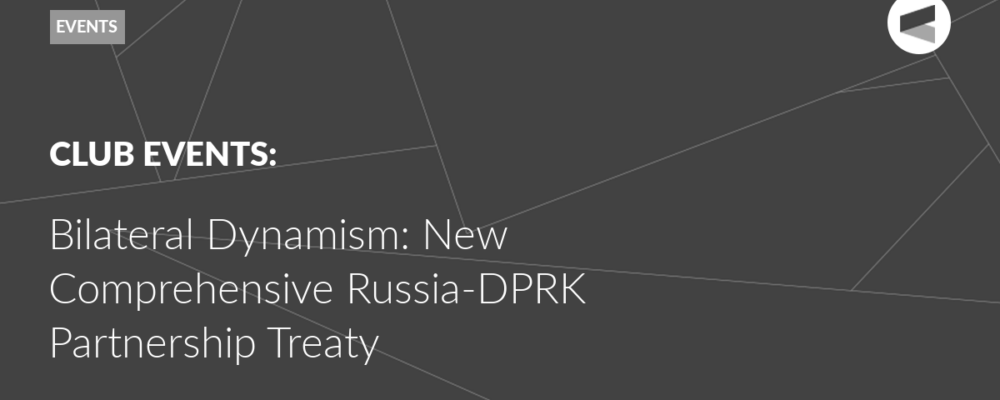In its relations with the sovereign states of the “southern belt” of the former USSR, Russia considers itself like any European empire of the past, with the exception that its policy there has always been focused not on the exploitation of territories, but on their development. The most clear evidence of this is the dynamics of the population increase in Transcaucasia and Central Asia, as well as the financial situation in the region. Due to Russia’s legacy, Transcaucasia and Central Asia are quite different from what Western European countries left in their former colonies. But this does not mean that we do not face similar challenges.
At the same time, unlike, for example, France, which in recent years has been curtailing its presence in Africa as part of the general reduction in its geostrategic importance, Russia is strengthening its position precisely at the global level. Obviously, the Russian economic and military presence in African countries is increasing, relations with most Latin American states are developing, and dialogue and multilateral cooperation with the Arab countries of the Middle East is actively underway. Against this background, within the framework of the “containment” strategy, we can observe tactical failures or systemic challenges to Russian policy in the southern part of the former USSR. A peculiar paradox arises: Russia’s policy is becoming more and more global, but at the same time it faces objective difficulties on its immediate periphery.
It is also necessary to take into account that Russia’s opponents in the West would very likely prefer to concentrate Russian efforts more precisely on the countries that surround it. First, because Russia’s involvement in the affairs of Transcaucasia and Central Asia will require significant diplomatic, economic and military resources, which will have to be redirected to the detriment of other, more promising regions. Second, Russia’s active presence in the countries of its southern periphery will almost inevitably come into conflict with the objective trends in socio-political development that are observed there. The growth of Russian influence and greater consideration of its hypothetical interests may, with a high degree of probability, require some increased pressure on the governments of the sovereign states of these two regions, bordering on interference in their internal affairs. The latter, as we note, is traditionally rejected by Russian foreign policy as inherent with the strategy of Western countries. In addition, even the slightest manifestation of harshness there can lead to a backlash, since it will be associated with manifestations of the postcolonial syndrome, and not without reason.
Third, the more active Russia’s policy towards its southern neighbours is, the more local governments will be tempted to attribute their own failures and difficulties in achieving basic development goals to “Russian interference”. This behaviour, we note, is completely natural and wouldn’t necessarily indicate that they had a pronounced anti-Russian position. In general, we see that the countries of the World Majority are striving the hardest to emancipate their policies from the influence of those major powers whose interests they have traditionally taken into account to the greatest extent, or with which they have the greatest number of contacts. However, given that Russia’s opponents persistently create in the countries of Russia’s southern periphery a base for anti-Russian sentiments and internal destabilisation in general, such processes may turn out to be more destructive.
Finally, the concentration of attention on the “southern belt” of the former Soviet Union may lead to the emergence of new military obligations for Russia or the need to use its military capabilities to stabilize its neighbours. In January 2022, Russia had experience in saving the government of Kazakhstan from mass protests among the population which were backed by criminal groups. It cannot be said that the political results of this experience were ideal from the point of view of how Russia would like to be perceived in Kazakhstan and in the region as a whole. Also, due to Armena’s high military expectations, the republic failed to develop its armed forces for years. This was one of the most important reasons for the defeat in the conflict with Azerbaijan in autumn 2020, as well as subsequent and future territorial losses. Using the example of Armenia, we see that the essence of allied relations was perceived completely erroneously: as unilateral obligations on the part of Russia. At the same time, for two years, Moscow itself, alone, relying only on Belarus, has been engaged in a confrontation with the entire collective West and could count on the fact that its allies in the CSTO would be able to independently resolve problems that are only indirectly related to Russian interests. We cannot now have absolute confidence that Russia’s other allies correctly understand the essence of their relations within the framework of the CSTO or bilateral agreements.
The combination of these factors shows that for Russia’s opponents, the strategy of “pulling” its efforts into the region of its southern periphery would be one of the most optimal at present. However, Moscow itself is hardly interested in its paradoxical response, which could become a simple recognition of the loss of influence on its neighbours and an attempt to “put a good face on a bad game.” This is exactly how, quite rightly, proposals to significantly reduce Russian influence and presence in the countries of its southern periphery will now be perceived. Moreover, the problem of the possible “spillover” of potential instability or hostile activity from Transcaucasia or Central Asia into Russia does not yet have a conceptual or a practical solution.
The problem is the huge (several thousand kilometres) land border between Russia and Kazakhstan, which needs to be developed and provided with security resources. Also, Russia still considers the countries of Central Asia a source of labour. Moreover, for most of them, there is no alternative to the Russian labour market. The question, therefore, is how to determine the optimal strategy that allows us to move away from the concept of “containment”, in favour of more asymmetric actions that allow us to solve problems related to the security and development of Russia itself. As the countries of Transcaucasia and Central Asia move further along the path of evolution of their sovereign statehood, Russia will have new opportunities, but also new challenges. We, of course, don’t expect unions of states hostile to Russia to arise in these regions. However, socio-economic and political instability itself, as well as the deployment of bases for terrorist activities of Western countries and forces under their control, may in the coming years force Russia to make some decisions in a situation which is even more difficult than the one which presents itself now. How radical these decisions will be depends on how quickly and adequately the optics of the Russian approach to the changing neighbouring countries and the outside world adapt.
The Valdai Discussion Club was established in 2004. It is named after Lake Valdai, which is located close to Veliky Novgorod, where the Club’s first meeting took place.
Please visit the firm link to site






